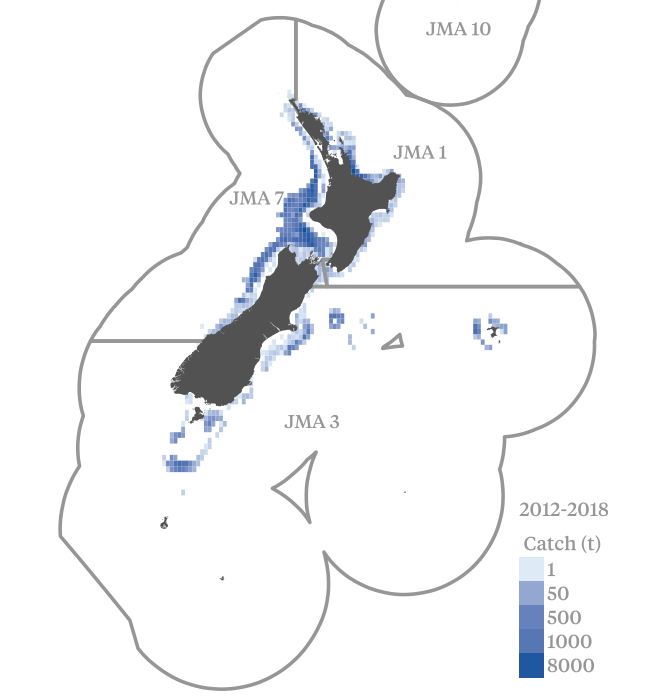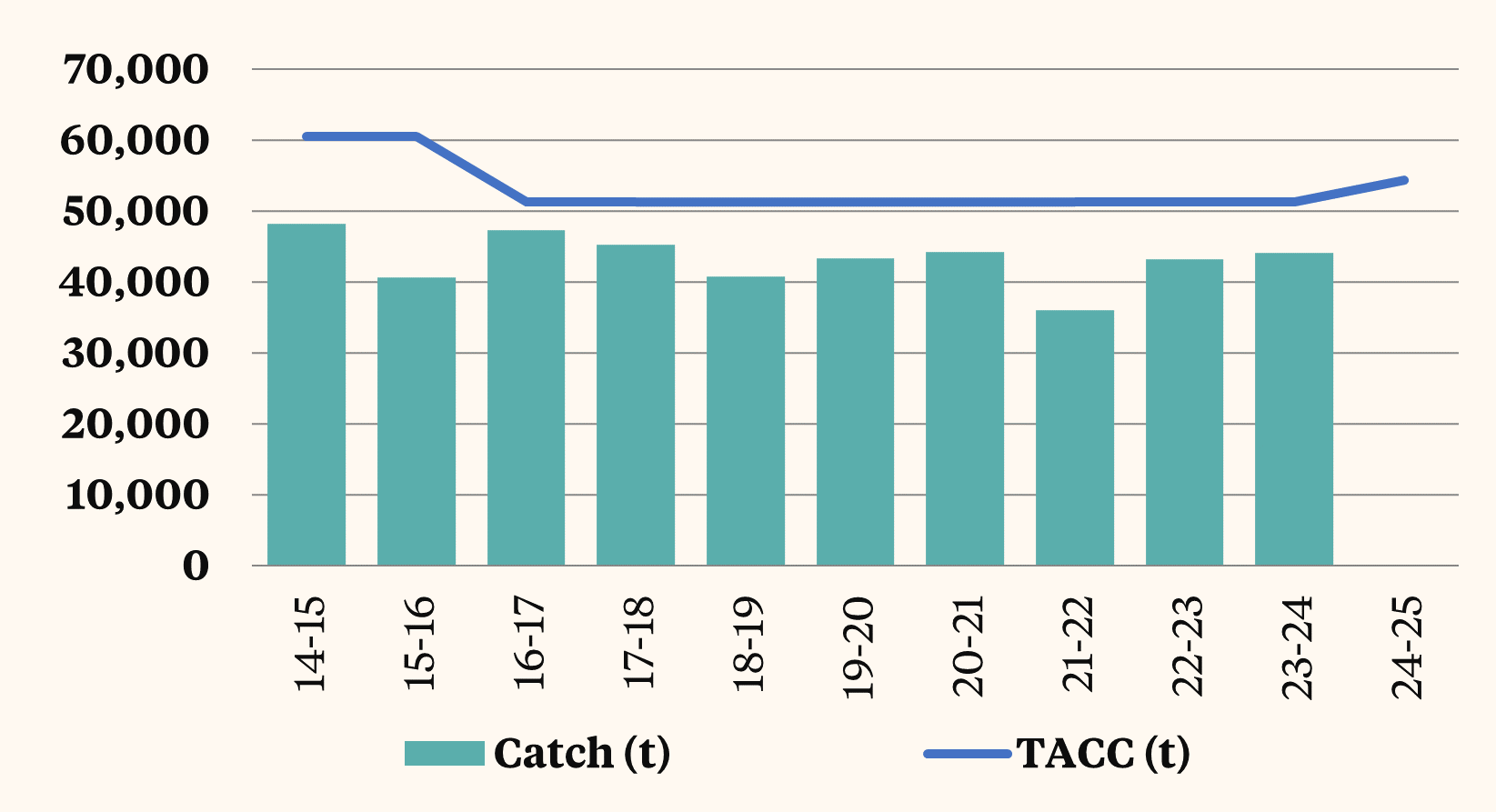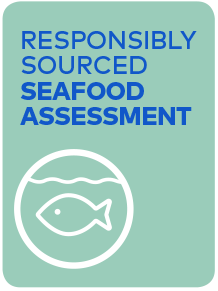Hauture, Jack mackerel, Horse jack mackerel, Horse mackerel, Slender jack mackerel
Commercial fisheries occur for three species of jack mackerel: Greenback horse mackerel (Trachurus declivis), Yellowtail horse mackerel (T. novaezelandia), and Chilean jack mackerel (T. murphyi). However, commercial catches and management of jack mackerel are not reported separately by species.
The high harvest volume makes jack mackerel a valuable part of New Zealand’s deepwater fisheries. A number of factors influence landing volumes in the jack mackerel fisheries including the availability of annual catch entitlement for bycatch and changes in market price.
All species of mackerel can be caught by bottom trawl, mid-water trawl, or by purse seine. Landings in JMA 7 represent the greatest proportion of total landings and are mainly taken by chartered trawlers. The jack mackerel in JMA 1 is mostly caught by purse seine in the Bay of Plenty and on the east Northland coast.
Jack mackerel is often combined with kahawai in the purse seine fishery. In an effort to conserve the kahawai quota, fishing companies will avoid these mixed schools, particularly at the start of the fishing season. Blue mackerel and skipjack tuna are fished in preference to jack mackerel in the purse seine fishery, causing the length of the jack mackerel season to be influenced by the availability of these species.
Jack mackerels have been included in the Quota Management System (QMS) since 1996. Before 1996, jack mackerels were considered part of the QMS, although ITQs were issued only in JMA 7. Jack mackerel in JMA 7 is managed as part of New Zealand’s deepwater fisheries. JMA 1 is managed by the Inshore Fisheries Management Team as almost all catch of those species in this area is taken by the domestic purse seine fleet.
Jack mackerel is currently under reassessment.
The risk assessment framework is used to assess the relative environmental risks of Australian and New Zealand wild-caught fisheries on fish stocks and the aquatic environment.
Assessments are undertaken for each species according to multiple ‘units of assessment’ (UoAs). The UoA is a combination of target species/stock and the gear type used by the fishery. Each UoA is assessed against three components for target species, bycatch and ecosystems, and management systems. Each component has a number of performance indicators, which have associated criteria, scoring issues, and scoring guideposts. For each UoA, each performance indicator is assigned a risk score according to how well the fishery performs against the scoring guideposts.
The risk assessment framework is currently under review and new risk assessments will be available soon.



